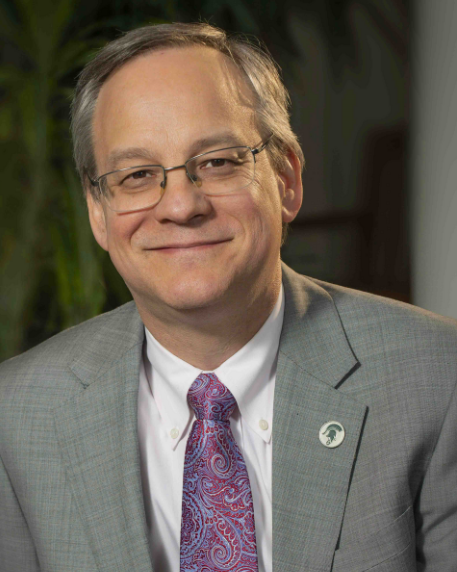Ask the expert: Taking a public-health approach to gun violence prevention
June 30, 2024
This story refers to the violence the Michigan State University community experienced in February 2023. Resources for students, faculty and staff are available from the Office for Resource and Support Coordination.
As the U.S. Surgeon General has declared gun violence an urgent public health crisis, the Michigan State University College of Human Medicine and the Jacobs School of Medicine and Biomedical Sciences at the University at Buffalo have come together through shared experiences with tragedies in their communities to take a new approach to addressing gun violence.
The partnership, which has been pursuing work and leading conversations on employing a public health approach since 2023, led to MSU hosting the inaugural Remembrance Conference in February 2024 on campus.
Aron Sousa, dean of the MSU College of Human Medicine, answers questions on what it means to take a public health approach to prevent gun violence and how the Remembrance Conference promoted this effort, as June is gun violence awareness month.
Responses are excerpts from a recording of MSU Today with Russ White.
What does it mean to use a public health approach to address gun violence?
 When we say public health approach, it means addressing gun violence in a way that centers on prevention, focusing on the health and well-being of populations, while also addressing the risk factors that can lead to gun violence. It really brings together experts from many different academic disciplines, as well as advocacy organizations and policymakers. This approach is so important because it is the most effective way to decrease the number of people dying from guns, particularly when you consider preventing suicide and shootings in communities.
When we say public health approach, it means addressing gun violence in a way that centers on prevention, focusing on the health and well-being of populations, while also addressing the risk factors that can lead to gun violence. It really brings together experts from many different academic disciplines, as well as advocacy organizations and policymakers. This approach is so important because it is the most effective way to decrease the number of people dying from guns, particularly when you consider preventing suicide and shootings in communities.
Hospitals and medical schools are taking several actions to promote change. Hospitals and health systems are making sure that gun locks are available to patients, especially if they have kids or people in the home who are at risk of suicide based on higher risk factors. Many suicides can be prevented when loved ones secure guns to keep them out of the hands of children and those who are thinking about suicide. In a similar way, medical students and public health groups have advocated policies that allow the police to secure guns when somebody has been violent in the home. Medical schools can prepare students to talk to patients about securing firearms and make sure students have instruction on prevention. Universities should promote research efforts that help find and best implement strategies that prevent injury and death from guns.
Why was the Remembrance Conference important?
Both MSU and Buffalo experienced tragic shootings. Students were targeted at MSU, and African Americans were targeted in Buffalo. The students at each medical school have worked to address gun violence, and bringing them together with other medical faculty and students was a powerful opportunity to advance public health and the leadership opportunities of these students.
Being with people to remember who we lost really helped us to think about public health approaches to gun violence. We realized that we could broaden this beyond our two schools and around 10 medical schools sent faculty and students to East Lansing. The conference included remarkable speakers, and members of the Michigan State Legislature attended to talk to students not so much about gun safety, but more so how to be an advocate, how talk to a legislator and how to leverage media outreach tactics.
More information about the conference is available on MSUToday.
How are students involved in taking public health approaches?
So much of this work is championed by students. Students at our school and other institutions have thought about curriculum, policy and advocacy in support of reducing gun violence. Students, including here at MSU, led advocacy efforts to make policy changes. They have become involved in organizations, including Scrubs Addressing the Firearm Epidemic and have also supported those affected.
At the MSU College of Human Medicine, we have students who helped us with our curriculum design, focusing on how to talk to people about guns in their house and whether their guns are safe. Medical schools across the country, if they have not already, should think about how they can integrate prevention work in their curriculums.
How are you working to get more people engaged in such an approach?
The most important thing that people can remember and actively do is to take care of each other. Think about what the risks are at home and what the risks are in their workplace. Monitor who is doing well and who might be at risk of needing support. It’s important to remember that each individual problem has different sets of solutions and our school, like so many others, is only going to continue this work.
This story orginially appeared on MSUToday.

